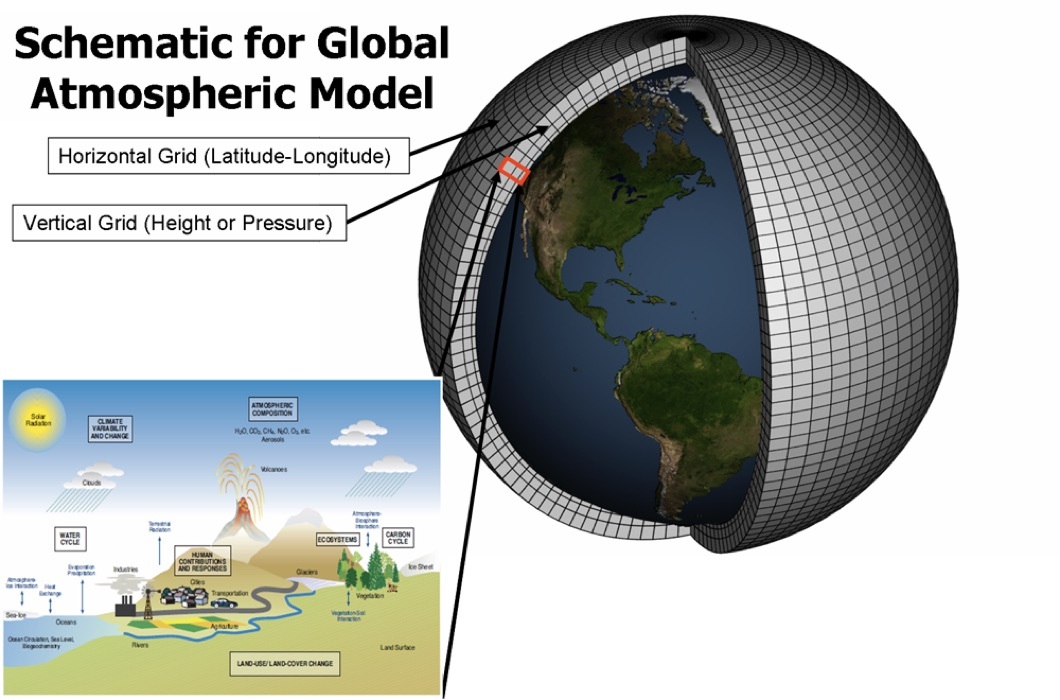
Figure 1:Graphic by NOAA
Global climate models are the main tool of climate scientists who investigate the impact of human action on future climate change. Run on supercomputers, these models can simulate global interdependencies of diverse climate factors such as ocean circulation, sea level rise, or vegetation growth. They also integrate socio-economic models that predict population growth, GDP, actions of cities and transportation, and air pollution. However, different models or model ensembles produce different future scenarios because the systems that are modeled are extremely chaotic: they contain a lot of “noise” and the slightest change in assumed background conditions or the recognition of feedback processes between, for example, ocean surface temperatures and cloud formations, will produce very different future scenarios. Since the apparent differences between climate models are due to both random internal climate variability and real structural differences in model physics, climate scientists are running model experiments (computer simulations) that compare the performance of the different models in order to better understand the physics behind them.
Video available at: https://vimeo.com/527397952